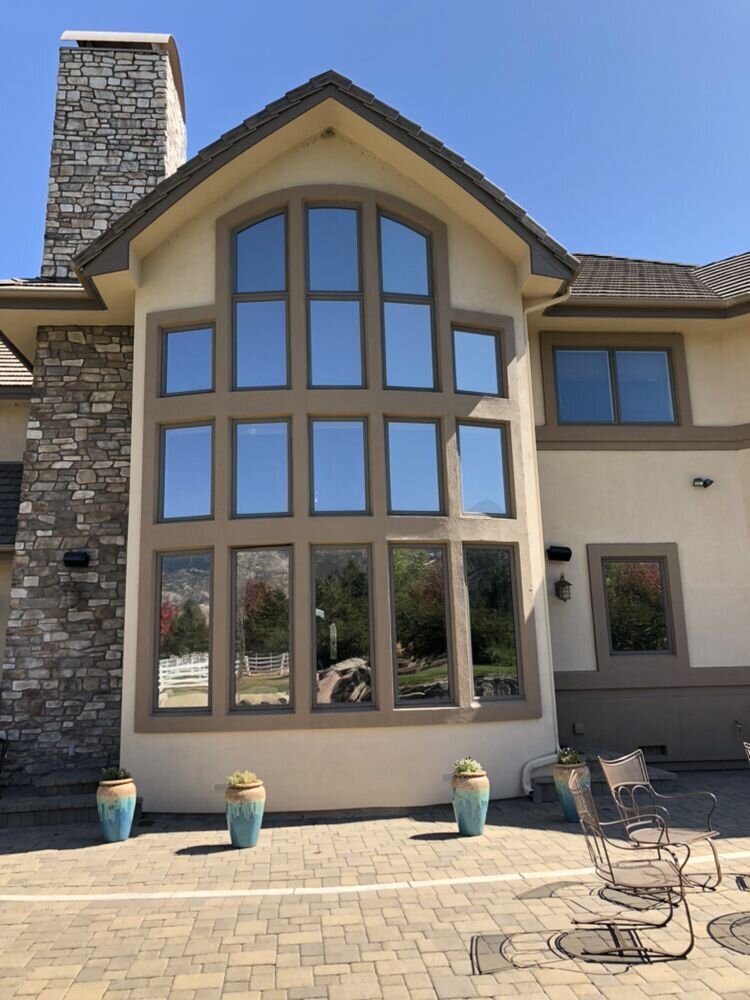Residential Window Tint: The Eco-Friendly Remedy for Your Home
Residential Window Tint: The Eco-Friendly Remedy for Your Home
Blog Article
How Residential Home Window Tinting Improves Your Home's Power Efficiency
Residential window tinting offers an engaging solution for house owners seeking to boost power performance within their space. By using specialized movies to home windows, it properly decreases warmth transfer, thus stabilizing interior temperature levels and minimizing the need for excessive heating or air conditioning. This not just curtails energy consumption however additionally provides a much more comfortable environment by alleviating glare. Comprehending the nuances of how tinting works and picking the ideal type for your home can be crucial. Oddly, what variables should one consider prior to making this investment?
Recognizing Home Window Tinting
Comprehending home window tinting is necessary for house owners looking for to improve both comfort and power efficiency in their home. Residential Window Tint. Window tinting involves the application of a slim film to the interior or exterior surface area of glass windows. This film can substantially regulate the amount of sunshine and warm that enters a home, thus influencing indoor environment problems
There are various kinds of window tinting movies readily available, each with distinctive residential properties. As an example, dyed movies absorb solar power, while reflective films deflect it far from the glass surface area. Ceramic films use an equilibrium of presence and heat being rejected, making them a popular choice among home owners. The performance of window tinting is frequently measured by its Visible Light Transmission (VLT) percent, which suggests just how much light can go through the film.
Benefits of Power Performance
Window tinting not just enhances aesthetics but additionally plays a significant role in enhancing energy effectiveness within household areas. By minimizing heat transfer with windows, colored films create a more steady interior climate, which can cause significant reductions in energy consumption for heating & cooling. This energy performance equates into reduced utility costs, providing house owners with significant lasting savings.

In addition, home window tinting enhances the convenience of living rooms. By decreasing glare and obstructing unsafe UV rays, colored windows create a more positive atmosphere, which can result in enhanced wellness for owners. The security versus UV rays likewise assists maintain furniture and flooring from fading, contributing to the long life of home items.
Just How Tinting Works
Tinting movies operate via a combination of advanced materials and modern technologies designed to control the amount of solar energy going into a home. Largely composed of polyester, these movies frequently incorporate ceramic or metallic particles that mirror and take in heat. This twin capacity enables them to dramatically lower the penetration of ultraviolet (UV) rays and infrared radiation while permitting visible light to travel through.
The effectiveness of window tinting is determined by its solar heat gain coefficient (SHGC), which learn this here now indicates just how much solar power is sent with the window. Reduced SHGC worths are more effective as they denote better warmth denial. Furthermore, window tints can feature a range of tones, allowing home owners to tailor their aesthetic choices while enhancing energy efficiency.
Furthermore, these films function as an obstacle, protecting against warmth loss during chillier months by mirroring interior heat back into the space. This thermal insulation impact complements the cooling benefits acquired during warmer months, adding to a balanced interior environment year-round. By handling solar power efficiently, domestic window tinting not just enhances convenience but also plays a vital role in minimizing power intake and reducing energy costs.
Picking the Right Color

There are numerous kinds of window films readily available, consisting of colored, metalized, and ceramic. Ceramic films offer exceptional warmth control without compromising visibility and are extremely long lasting, making them a preferred choice.
Visible light transmission (VLT) is another vital variable, as it shows the quantity of all-natural light that can travel through the tinted glass. House owners must pick a color with a VLT that complements their lighting preferences while still supplying appropriate glow reduction.
Furthermore, examining the solar warm gain coefficient (SHGC) can assist figure out how well a color can block warmth from sunlight. A lower SHGC indicates better warmth control, ultimately boosting power performance.
Installment and Maintenance Tips
Proper setup and upkeep are important parts in taking full advantage of the benefits of residential home window tinting. To attain ideal outcomes, it is advisable to work with a qualified specialist for installation. This makes sure that the color is used properly, preventing air bubbles, creases, or misalignment that could jeopardize performance. Specialists likewise make use of specialized tools and strategies, which can improve the toughness and effectiveness of the color.
Following setup, upkeep is necessary to lengthen the life of the window movie. It is advised to wait a minimum of 30 days prior to cleansing the tinted home windows to allow the glue to cure totally. When cleansing, use a soft fabric and a mild, ammonia-free cleaner to avoid damaging the film. Stay clear of unpleasant materials that can scratch the surface.
Additionally, routine assessments are valuable. Examine for any peeling or bubbling, which could suggest improper installation or wear in time - Residential Window Tint. Resolving these concerns get redirected here without delay can prevent further damage and maintain energy efficiency. By adhering to these installation and maintenance suggestions, house owners can guarantee their window tinting remains to offer considerable energy savings and comfort for years to come.
Verdict
In final thought, property window tinting offers as an efficient website here service for enhancing power effectiveness within homes. By minimizing heat transfer and obstructing unsafe UV rays, home window films contribute to decrease energy consumption and boosted indoor comfort. The option of proper tinting materials, in addition to appropriate installation and upkeep, additionally makes the most of these advantages. Inevitably, window tinting stands for a sustainable financial investment that not only lowers utility expenses but also advertises a comfortable living atmosphere throughout the year.
Window tinting involves the application of a slim movie to the interior or exterior surface of glass home windows. By decreasing warm transfer via windows, tinted movies develop a more stable interior environment, which can lead to significant reductions in power consumption for heating and cooling.The efficiency of home window tinting is gauged by its solar heat gain coefficient (SHGC), which indicates exactly how much solar power is transmitted through the home window. By taking care of solar power efficiently, household home window tinting not only enhances comfort however additionally plays an important function in lowering power intake and lowering utility expenses.
By reducing heat transfer and blocking damaging UV rays, window films contribute to lower energy consumption and improved indoor comfort.
Report this page